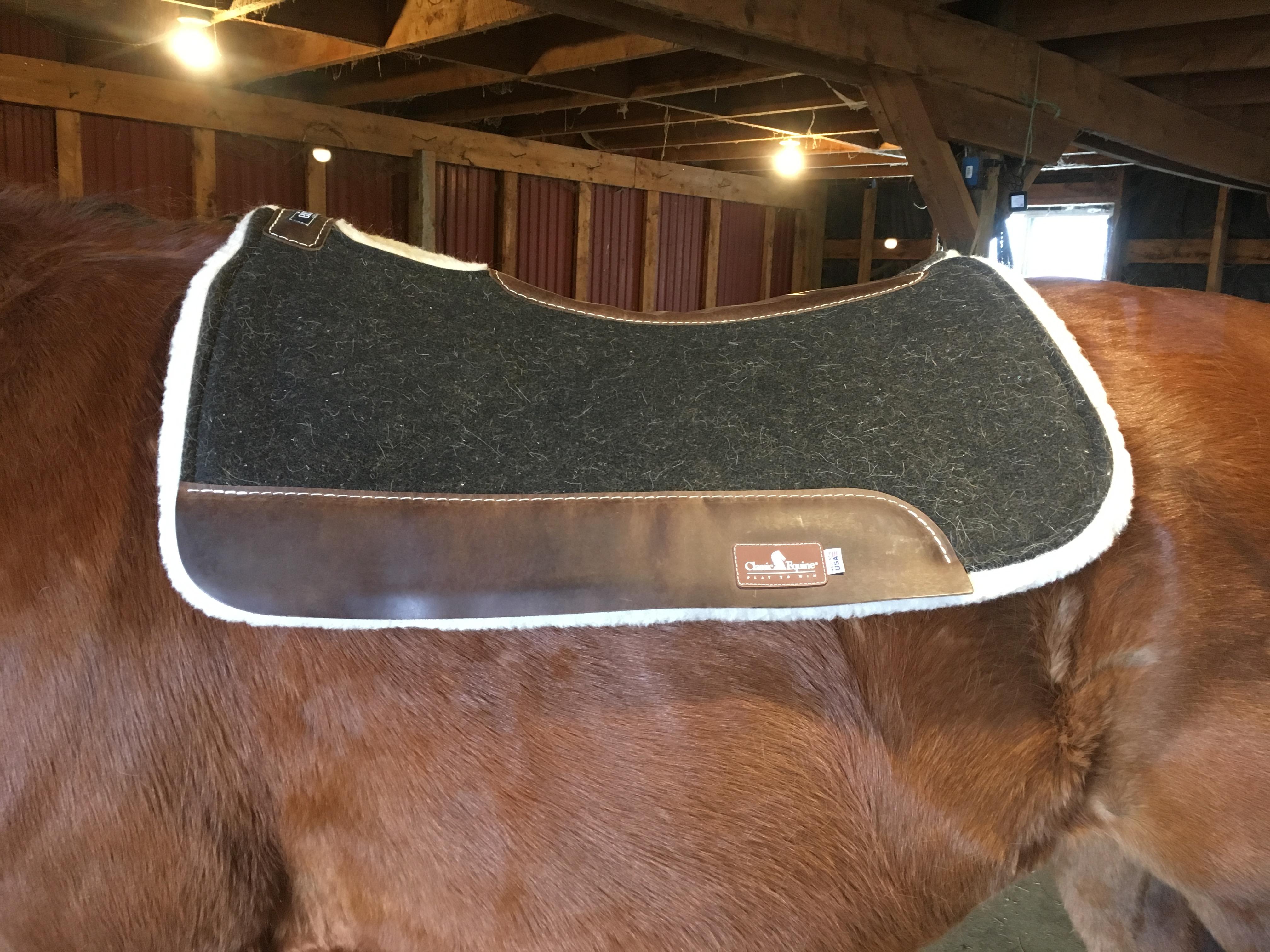
Product Review: Classic Equine BioFit Correction Fleece Pad
High-withered horses, worry no more.
At the risk of blanket-statement stereotyping all Quarter horses into the same literal shape, I’ve always had a relatively easy time fitting western saddles, even as the horse in question changed in muscle definition and fitness. While I’ve met a few outliers who were tricky to fit in the more specialized disciplines, I generally have had pretty good luck with a few pad combinations and most saddles on the round and stocky ranch-type horses I’ve owned.
And then I had to go and get an OTTB, with the also-at-risk-of-blanket-statementing yet stereotypical Thoroughbred high withers. I’m learning a lot as I go about conformation and conditioning of the Thoroughbred versus the Quarter horse, with this particular horse being turned out for a year between his track life and his second career. Jobber had very little topline muscling when I brought him home, making saddle fit even more of a challenge.
When fitting western tack, having the right saddle pad can truly make all the difference — this was a concept that took me awhile to wrap my mind around when I first transitioned from hunt seat to western riding. A poorly-fitting saddle that perches, sits on the spine, pinches the shoulder or is far too long for a horse’s back cannot be corrected — but some aspects of saddle fit, such as bridging or collapsing behind the shoulder, can be assuaged with the proper pad.
Jobber’s topline is certainly developing since I brought him home in November, but gaining muscle and weight in the right places is definitely a slow process. It was critical for me to find a saddle pad that addressed his areas of weakness and filled in where he was lacking to avoid back soreness or pressure points — he’s still hollow behind his shoulder, and when combined with his prominent “shark fin,” I have a great recipe for a saddle to sit too low in the front and crush his withers.

All photos by Kristen Kovatch. Please excuse how quickly this pad became covered in hair from my spring-shedding horses.
Fortunately, the Classic Equine BioFit Correction Pad was created for horses just like Jobber — animals with high withers, older horses with diminished toplines, or in our situation, a horse with high withers and a topline that still needs developing. Featuring a wither cut-out to relieve any pressure from a low gullet, the BioFit Correction Pad now ensures that I have the two- to three-finger clearance between Jobber’s withers and the gullet.
As if this pad were designed just for us, the BioFit Correction Pad includes a wedge to fill in the space behind the shoulder. This wedge also provides lift to the front of the saddle to help prevent crushing his withers.
The pad as a whole is contoured to the natural curve of the horse’s back and also features a channel along the spine to ensure plenty of room. Sturdy yet soft wear leathers will keep this pad in good shape even under rigorous use. The BioFit Correction Pad is 7/8″ thick in a wool blend for plenty of shock absorption; the pad comes with a regular felt bottom as well as in fleece. I ordered mine from SmartPak and opted for the fleece as this particular horse has demonstrated thin-skinned tendencies and I want him to be absolutely comfortable!
Thanks to the BioFit Correction Pad, I was able to take a saddle with an okay fit and turn it into a saddle with great fit. As Jobber’s topline changes shape going into the summer, I’ll be able to make continued corrections to ensure he is feeling and performing his best.
Classic Equine has always been a leader in western saddle pads and equipment. Check out their full selection of western pads for every possible use and fitting scenario!










Leave a Comment